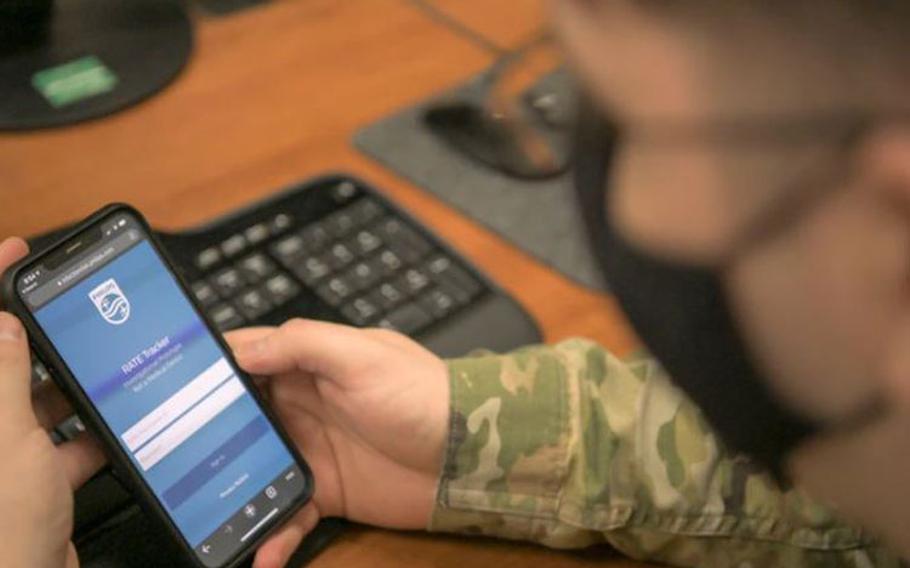Community News
18th MXG volunteer to RATE their health
United Airlines Worldwide Media Relations May 24, 2021

An Airmen from the 18th Component Maintenance Squadron prepares to login to the Rapid Analysis of Threat Exposure app at Kadena Air Base, Japan, April 29, 2021. The RATE app is used to securely monitor the user’s health biometrics such as their sleep data and respiratory rate. (U.S. Air Force photo by Senior Airman Demond Mcghee) ()
KADENA AIR BASE, Japan -- Airmen from the 18th Maintenance Group are taking a new technological approach to track their physical wellness and health by wearing smart watches and rings that’ll alert them if they’re becoming ill.
The 18th MXG, represented by 500 volunteers, is one of the only OCONUS participants besides Guam to be involved in the Rapid Analysis of Threat Exposure study conducted by the Defense Innovation Unit Research Program. Through the study, service members are able to detect illnesses such as COVID-19, up to 48 hours before the onset of symptoms.
“The goal of this effort is to rapidly operationalize the RATE algorithm to support healthcare personnel and critical DoD staff to maintain mission capability during the COVID-19 pandemic,” explained Staff Sgt. Adam Celia, 18th Component Maintenance Squadron precision measurement equipment laboratory quality assurance evaluator.
Celia serves as his unit's associate investigator, and underwent 20 hours of training to gain approval from the Air Force Research Lab’s 711th Human Performance Wing’s institutional review board for the 18th MXG to participate in the study. Once formally trained, he took on the responsibility of handling the biometric gear, monitoring volunteers' data on a secure website, and notifying them when there may be a concern.
“You should think of RATE like the check engine light in your car,” said Heather Ichord, a contractor with the DIU. “When that check engine light comes on, you know something is amiss. In this case, the idea is that you could be coming down with an infection, but the important point is you’re getting yourself to a medical professional for a conversation, an early diagnostic, and then treatment.”
The Garmin smart watch and Oura ring work together to track biometrics such as heart rate, respiratory rate, sleep data and body temperature.
“As the investigator I don’t see anyone’s specific metrics, I just see their RATE score. The score is constantly changing, but a higher number is more concerning,” Celia added.
By the end of May 2021, the rollout of RATE technology will reach a sum of approximately +10K people, and will begin to transition to other cohorts such as the Navy and select Combatant Commands.
Thanks to the efforts of the study, the 18th MXG has been able to mitigate the potential of outbreaks in their group, and also gave Celia hope for the future as the study continues.
“We’ve been given a great opportunity to participate in this,” he said, “All the data is going towards something that’s hopefully helping more people than just us.”
(No federal endorsement meant for the companies or products mentioned in this article.)